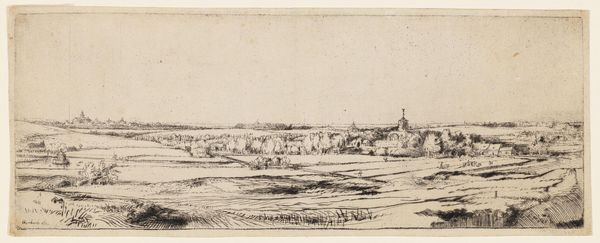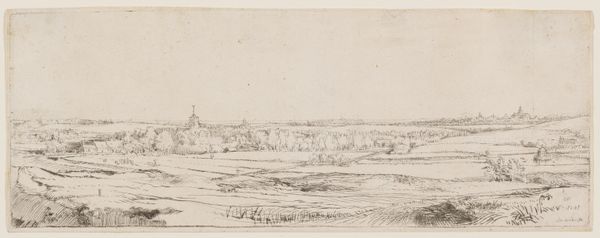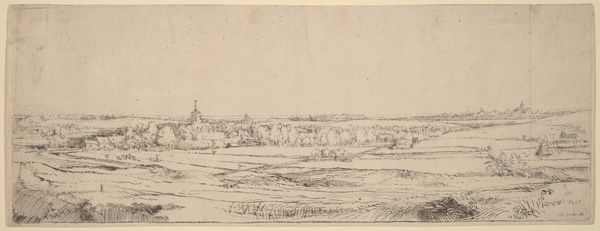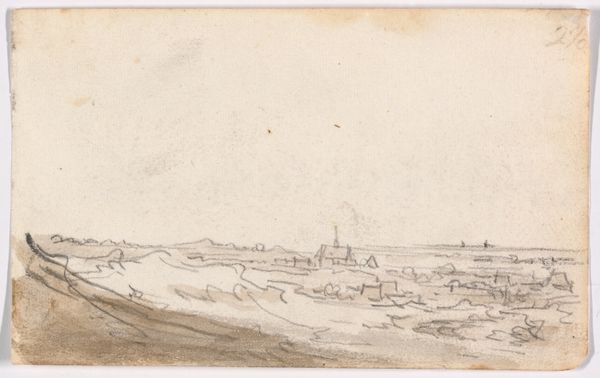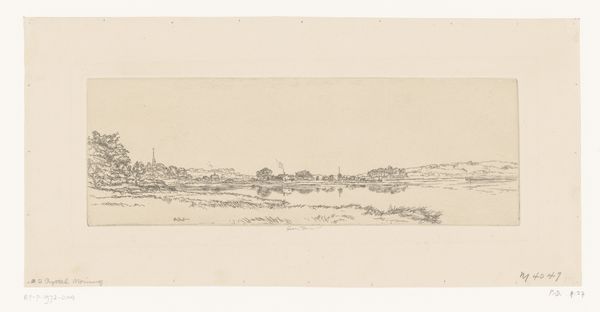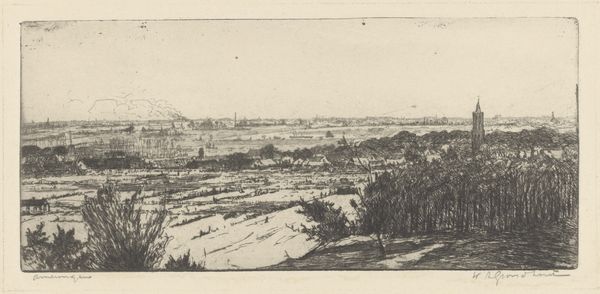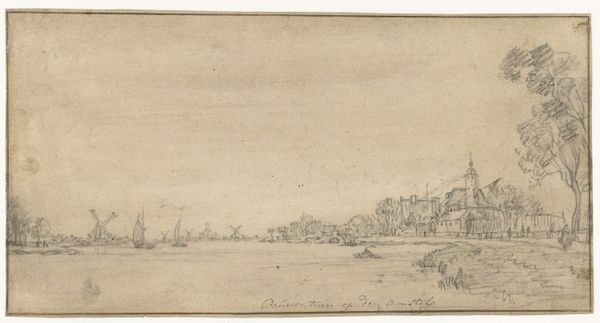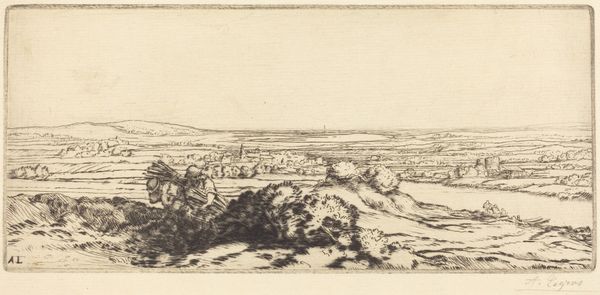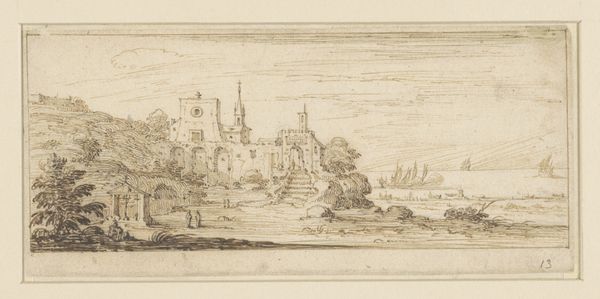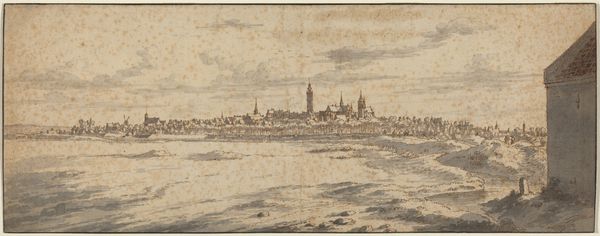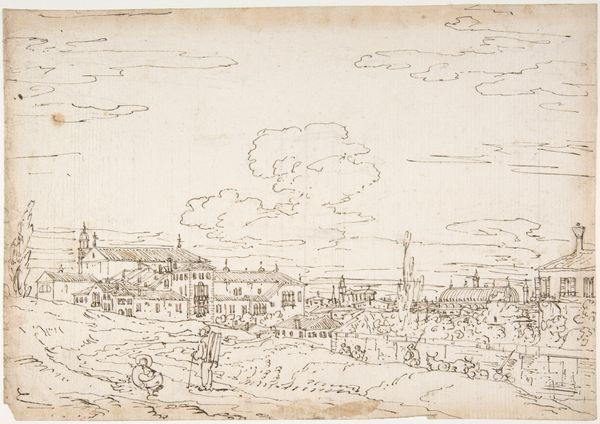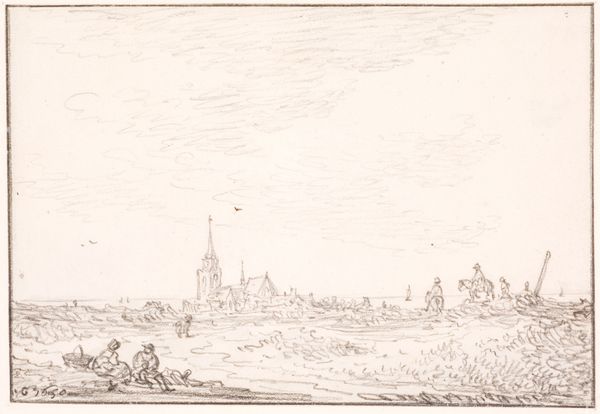
print, etching, drypoint
#
baroque
#
dutch-golden-age
# print
#
pen sketch
#
etching
#
landscape
#
etching
#
line
#
drypoint
Dimensions: 4 3/4 x 12 7/8 in. (12.07 x 32.7 cm) (plate, sheet)
Copyright: Public Domain
Curator: Rembrandt van Rijn's "The Goldweigher's Field" completed in 1651 using etching and drypoint, presents us with a captivating view of the Dutch landscape. What’s your first take on this scene? Editor: Immediately, it feels open and spacious. Despite the intricate detail in the foreground, my eye keeps being drawn to that luminous horizon. It's almost ethereal. Curator: Rembrandt’s landscapes, particularly his prints like this one, stand in interesting contrast to the highly idealized and classical landscapes of the time. This image is seemingly more quotidian. It seems to engage with both the prosperous mercantile culture of Amsterdam as well as with an idealized view of its countryside. Editor: And look how he uses line – sometimes incredibly delicate, sometimes much bolder – to suggest distance and texture. It's a bit like he’s sketching directly from nature, capturing the light dancing on the fields and the subtle shift in atmosphere. Almost poetic, I think. Curator: Indeed! The “Goldweigher's Field” likely references Jan Uytenbogaert, a prominent receiver of taxes. Beyond just documenting what he saw, Rembrandt was participating in the tradition of celebrating the achievements of merchants in a Republican state and showing their appreciation of its local land. Editor: That context makes it richer, knowing it's not just any field, but *the* Goldweigher's Field, viewed almost through the lens of admiration, elevating something everyday into the realm of symbolic meaning. A field made iconic through industry, commerce, a celebration of home. Curator: Precisely. The etching, its lines mirroring the furrows and roads below, becomes a meditation on ownership, labor, and the artistic representation of status and prosperity. Editor: Looking at the marks again, so confident, so immediate… there’s such life imbued in the landscape, that the status piece feels a bit softened by the overwhelming serenity of the whole composition. I find that fascinating. Curator: Me too. Rembrandt challenges our perception of status with the simplicity of natural depiction and perhaps democratizes the genre, inviting a more profound consideration of the social fabric surrounding these individuals. Editor: It reminds us to value the small slice of the world we occupy and the networks we cultivate with it, even in just a little etching such as this one. Curator: Precisely. "The Goldweigher’s Field" asks us to consider our own sense of place and participation in a narrative larger than ourselves, both historically and contemporaneously.
Comments
minneapolisinstituteofart almost 2 years ago
⋮
Saint Bavo, the great church of the town of Haarlem, stands on the horizon at left in this panoramic landscape. The fine country estate, with a tower and gatehouse amid a grove of trees at right, was long thought to belong to a tax receiver who had assisted Rembrandt in building his career; hence the etching came to be known as The Goldweigher's Field. Twentieth-century scholars discovered the country house was in fact Saxenburg, an estate belonging to Christoffel Thijsz., to whom Rembrandt was deeply in debt and behind on his mortgage payments. The landscape space, with its curving sweep and gentle undulations, is highly original. There are few continuous contours; broken lines, short hatchings, and patches of drypoint burr suggest a space illuminated by diffuse light and dissolved in atmosphere. Rembrandt worked from atop one of the dunes to the west of Haarlem. Close inspection reveals the picturesque sights Rembrandt enjoyed on his walk that day, including the gathering of women spreading cloth to bleach in the sunny fields, and the domed pavilion standing in the middle of a duck pond. One can only wonder about Rembrandt's thoughts as he studied the wealth of the man who could determine his own financial fate.
Join the conversation
Join millions of artists and users on Artera today and experience the ultimate creative platform.
